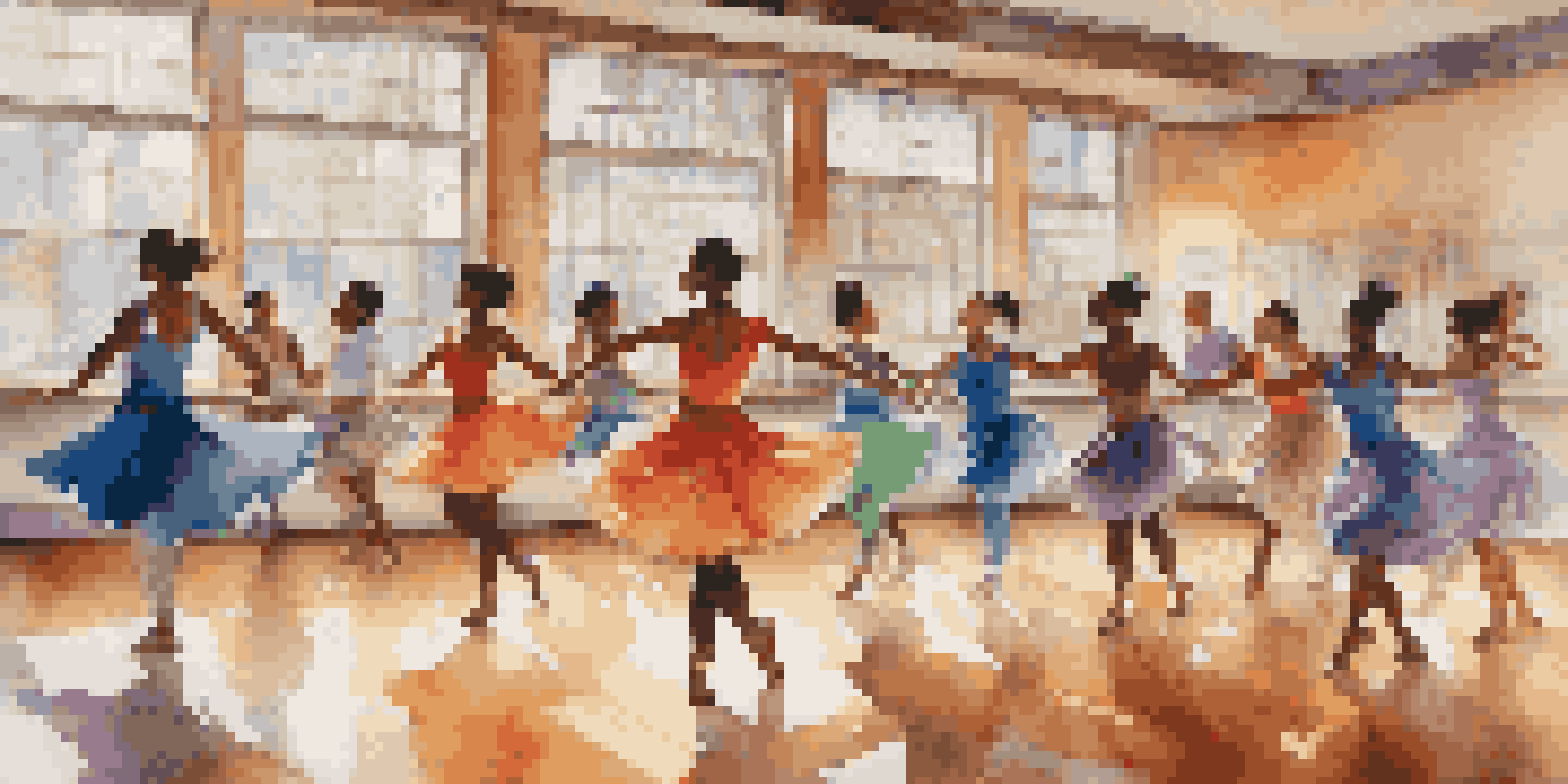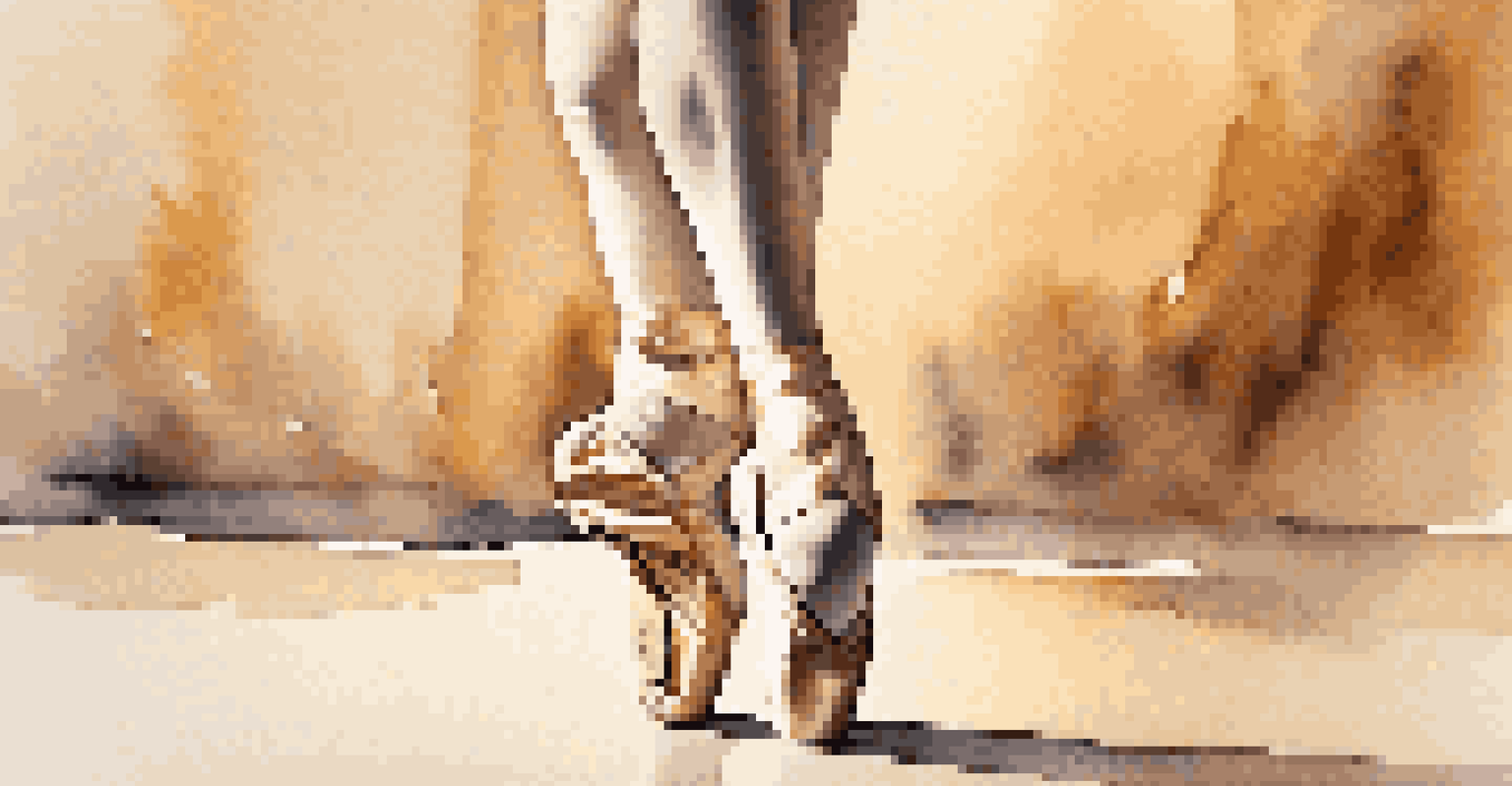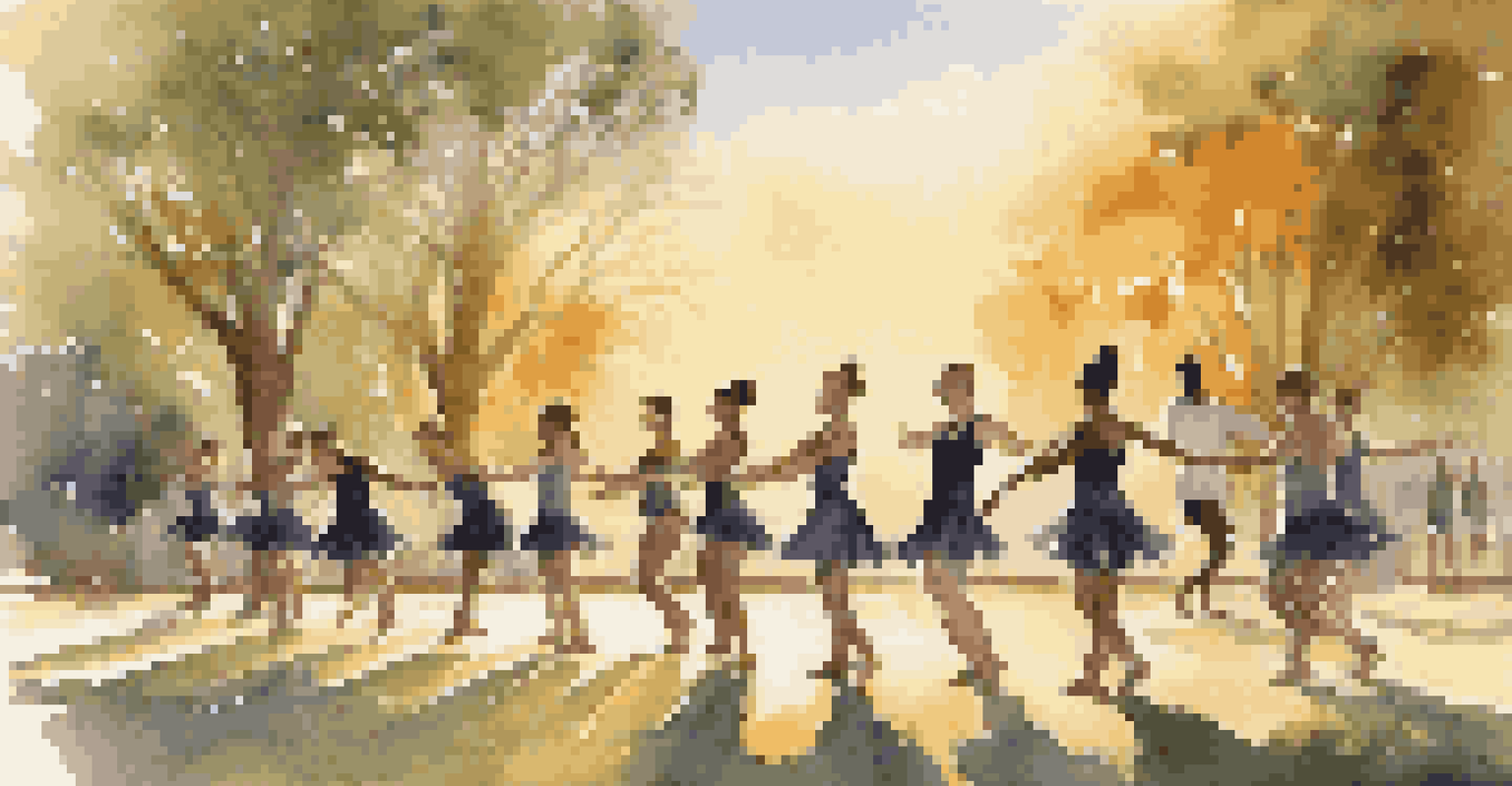The Psychology of Learning in Dance Education Settings

The Role of Emotion in Dance Learning
Emotion plays a pivotal role in how dancers learn and express themselves. When students connect emotionally to a piece of choreography, they are more likely to engage deeply with the material. This emotional connection can enhance memory retention, making it easier for them to recall movements during performances.
Dance is the hidden language of the soul.
For instance, a dancer who feels joy while learning a lively routine may find that the steps come more naturally than if they were merely focusing on technical execution. This emotional engagement transforms the learning experience into something more meaningful and enjoyable.
Moreover, instructors who foster an emotionally supportive environment can help students feel more confident and open to experimenting with their dance styles. By understanding the psychology behind emotions, educators can create a classroom atmosphere that nurtures creativity and growth.
Cognitive Load: Balancing Information in Dance
Cognitive load refers to the amount of mental effort being used in the working memory. In dance education, managing this load is essential for effective learning, as students need to absorb choreography while also focusing on technique and timing. If the cognitive load becomes too high, students may struggle to retain information.

For example, when teaching a complex sequence, breaking it down into smaller, manageable parts can help reduce cognitive overload. This approach allows students to master each segment before combining them into a full routine, leading to better overall performance.
Emotion Enhances Dance Learning
Emotional connections to choreography deepen engagement and improve memory retention in dancers.
Furthermore, employing varied teaching methods, such as visual demonstrations and verbal instructions, can help cater to different learning styles and alleviate cognitive strain. By being mindful of cognitive load, educators can create a more effective and enjoyable learning experience.
The Importance of Feedback in Dance Learning
Feedback is a crucial component in any learning process, and dance education is no exception. Constructive feedback helps dancers understand their strengths and areas for improvement, fostering a growth mindset. When students receive timely and specific feedback, they are more likely to make progress in their skills and confidence.
The dance is a poem of which each movement is a word.
For instance, a teacher might provide positive reinforcement for a dancer's strong performance during a class while gently correcting any mistakes. This balanced approach encourages students to take risks and learn from their errors without fear of judgment.
Additionally, peer feedback can also be beneficial in dance settings, as students often feel more comfortable receiving insights from their classmates. By creating a culture of constructive feedback, educators can enhance the learning experience and promote collaboration among students.
Creating a Safe Learning Environment for Dancers
A safe learning environment is vital for fostering creativity and exploration in dance education. When students feel secure, they are more likely to express themselves freely and take risks with their movements. This sense of safety not only enhances individual learning but also strengthens group dynamics.
For example, creating an atmosphere where mistakes are viewed as learning opportunities can empower dancers to experiment without fear. Instructors can encourage this by celebrating effort and creativity, rather than just focusing on the end result.
Cognitive Load Affects Retention
Managing cognitive load through simplified instruction helps students master dance techniques effectively.
Moreover, ensuring physical safety—through proper warm-ups, injury prevention techniques, and space awareness—allows dancers to focus on their learning rather than worrying about potential injuries. By prioritizing safety, educators can cultivate a positive and productive dance learning environment.
The Impact of Motivation on Dance Learning
Motivation plays a critical role in the learning process, particularly in the arts. In dance, intrinsic motivation—where dancers find joy and satisfaction in the act of dancing itself—can lead to a more profound commitment to learning. When students are motivated from within, they tend to practice more and engage more fully in the learning process.
For example, a student who loves the style of dance they are learning is likely to put in extra effort, whether attending additional classes or practicing at home. This enthusiasm not only enhances their skills but also contributes to a more vibrant classroom atmosphere.
Conversely, extrinsic motivation, such as performance opportunities or competitions, can also play an important role in driving student engagement. By balancing both intrinsic and extrinsic factors, educators can create a motivational landscape that encourages persistence and passion in dance education.
Social Learning in Dance Education Settings
Dance is inherently a social activity, and social learning theory highlights the importance of observing and interacting with others in the learning process. In dance classes, students often learn from one another through imitation and collaboration, which can enhance their understanding of movement and technique.
For example, watching a peer execute a step can provide valuable insights that might be missed through verbal instruction alone. This observational learning encourages students to analyze and refine their movements, leading to a more comprehensive grasp of choreography.
Cultural Context Enriches Education
Incorporating diverse dance styles fosters appreciation and creativity while respecting students' backgrounds.
Additionally, group activities and partner work foster a sense of community, allowing dancers to support each other’s learning journeys. By embracing the social aspects of dance, educators can create a dynamic and enriching learning environment that benefits all students.
The Role of Cultural Context in Dance Learning
Cultural context significantly influences dance education, shaping both the content and the way it is taught. Understanding the cultural backgrounds of students can enhance the learning experience, as it allows educators to incorporate diverse styles and traditions into their curriculum. This inclusivity can foster a deeper appreciation for dance as an art form.
For instance, introducing students to various dance styles from around the world can broaden their horizons and inspire creativity. When students see the connections between their own cultural expressions and those of others, it can lead to a richer learning experience.

Moreover, acknowledging cultural differences also helps create a more respectful and empathetic classroom environment. By valuing diversity in dance education, educators can empower students to embrace their unique identities while learning from one another.